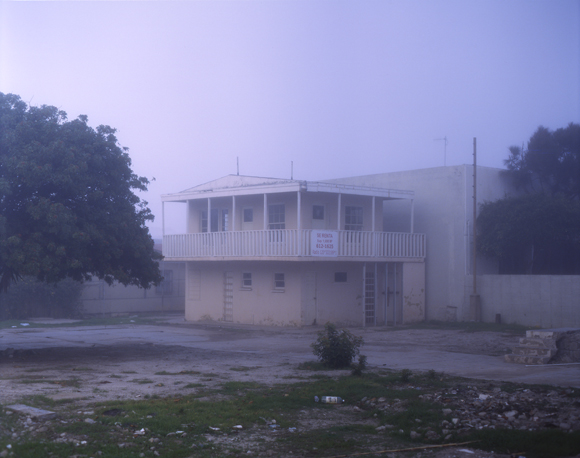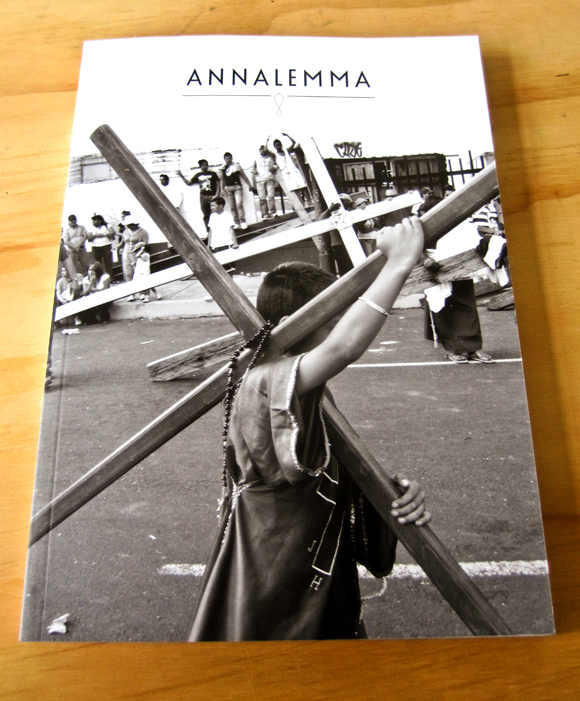Located in El Paso, Texas, the National Border Patrol Museum (and its surprisingly cheerful gift shop) is, as it stands, a confusing testament to a whole mess of confounding issues. These include: How do national boundaries line up with the political, emotional, and natural ones? Who do we mark as “self” and who “other”? Who is the bigger problem? And what should their punishment for transgression be?
Regardless of such multiple interpretations, the museum website proclaims it to be one of America’s “best-kept secrets,” and promises a “journey through the history of the US Border Patrol from the beginning in the Old West, through Prohibition, World War II, into the high-tech Patrol of today.” This is a little bit true: the mish-mash of items on display, even those clearly identified (and many are not), are certainly from diverse points in the history of patrolling borders. Such as the early-‘30s photographs that show four Model T Fords bedecked with Border Patrol logos, and the array of fancy weaponry that, if not on loan from a science fiction film, must be very recent. It might, however, be better said that the facility stands as a thinly veiled homage to the genius of the Department of Homeland Security—itself an only slightly dressier version of rampant jingoistic patriotism.
Therefore it is not so much, as the site further explains of the museum, an exhibit of “uniforms, equipment, photographs, guns, vehicles, airplanes, boats, and documents depicting historical and current date sector operations throughout the United States.” It is instead an argument for why such finery and weaponry is necessary: because America KICKS ASS. Why? September 11th! Also: Check out this shiny belt! And look at this idiot we caught trying to cross the border, that we photographed tied to the underside of a car. He’s only 8! Confused? Now we’re shooting off fireworks! America!
Yet there are things to be learned by closely investigating various kinds of borders, and how we patrol them—and when we don’t. What follows is a list of proposals for a future National Border Patrol Museum (and Gift Shop), each of which might better instruct viewers on what lines exist, how they get crossed, by whom, and under what conditions.
1. It is guarded so heavily you cannot get in or out.
2. The museum is divided in half with a thick, solid black line painted through the center of it. All the cool stuff is placed on one side of the museum, and various items that you don’t know what they mean or why they are there are in the other. A few people can see the cool side but most can’t. You are unsure how this is decided.
3. It is in Mexico. You have to walk there, but you’re pretty sure it’s going to be worth it.
4. Instead of addressing the national border, it explores instead the emotional boundaries of various Border Patrol workers. So a visitor might ask, “where’s the rest room?” And the person behind the counter in the Museum Shop might say, “Down the hall and to the left,” but she might also say, “Can’t you see I’m doing something right now? I’m a real person with valid feelings too, you know.” Then burst into tears. On the other hand, when you walk in, the on-hand docent might well hound you with intimate questions. “Why is your boyfriend so fat,” maybe, or “did your parents really love you?” One of them will certainly try to hug you. On days when they are feeling very aggravated, sometimes they hurt people, but mostly their superiors believe these to be accidents. When you leave the museum, you feel violated, but you also learn what it’s like to violate someone else.
5. There is a section devoted to the racial profile of the thousands of illegal aliens from Canada living in the US, and full accounting of their under-the-table work and marijuana smuggling incomes.
6. September 11th isn’t mentioned at all.
7. The Department of Homeland Security is.
8. The museum is torn down, and replaced with a giant fence that runs the perimeter of the land owned by the museum. As you walk around the fence on the outside, you hear history and facts about the US Border Patrol in English. If you walk along the inside, you hear history and facts about Mexican Border Patrol, in Spanish. Sometimes it’s hard to tell the audio tracks apart and most of the time it’s impossible to hear one from the other, but if you try to cross the fence of course you will get shot. If you ask questions you are prosecuted as a terrorist under the USA PATRIOT Act. The tour takes a week and a half and you’re not supposed to stop in the middle. Also there is no water. If someone tries to give you water, they are prosecuted as terrorists under the USA PATRIOT Act.
9. It is divided into wings by sexual proclivity of visitor. Such that, there is one gallery with all super hot Latino men for people who are into that; another for pedophiles, another is filled with people who look like Pamela Anderson and enjoy group activities. Visitors can enter one at a time. You’re not supposed to touch the sexual object in the room, but no one will ever know if you do. The object promises not to tell. It doesn’t matter how long you stay in there.
10. There is a big sign outside the museum that says, America is Great. Fuck You, Other Countries.
11. The gift shop, already replete with fine glassware, beer steins, shot glasses (called “shooters”!), and flasks, just goes that extra step and opens up a damn bar, right there in the middle of the museum. We’re the Border Patrol, the action seems to state. You gonna stop us?
12. Next to the room of Fallen Heroes, there is a room filled with pictures of the Border Patrol’s hottest lady agents in skimpy bikinis.
13. The museum has exhibits describing how biological, ecological, and weather events adhere to state borders. They don’t, so most of these exhibits exist only in the realm of speculative fiction. There are no markers indicating these mythological components, so the ability of natural phenomenon to adhere strictly to political jurisdiction is presented as fact. This is considered a helpful fiction, somewhat along the lines of the one that calls most border crossers drug dealers.
14. It’s done over in bright colors and shiny plastic, and it’s instructional, for kids. They’re taught how to find a coyote who’s trustworthy, how to negotiate the price for a crossing, and how to detect someone who deals in the illegal slave trade. Jaunty animals are used to play out various helpful scenes. On certain days, the Border Patrol Agents put on giant animal costumes and walk around pretending to be Carl the Coyote or Sal the Slavemaster. There are a lot of puns, and a couple fart jokes. That’s so the kids pay attention: it’s like speaking to them in their own language, you know?
15. A total annual accounting of tax dollars spent patrolling borders is provided alongside a cost in savings to US taxpayers as regards wages paid illegal aliens in the labor sector. The museum is next door to the Monument to the Illegal Alien, which is not an obelisk, but a deep deep hole in the earth. No one knows it is there, but it might be the most important part of the museum.
16. Before you go in, you are given a computer-matching test that finds your ideal soul mate. Your ideal soul mate lives in Honduras in terrible poverty and under great political distress. When you visit the museum—the guns, the uniforms, the traps, the jokes about aliens, the subjugation to which the facility must put “the other”—that “other” is humanized for you. Your soul mate might have that gun pointed at him; your soul mate might be the one handcuffed in that video; your soul mate might have tried to cross that dessert on foot, might be trying to, right now. To get to you. All you can do is stand there in the middle of the museum and cry, but the Border Patrol asks if you want to buy a T-shirt.
17. It is in Spanish. It is renamed “You are brown and scare us. We will invent reasons to shoot you, and should that fail, we will allow an illegal drug trade to flourish and give you little option but to take part in. This is not genocide.” It costs $50,000,000 to get in.
18. There are guards posted everywhere to answer your questions. After every question, they say, “Badges? We don’t need no stinking badges!” in a Cheech-and-Chong accent. You are supposed to laugh every single time and if you don’t they deport you, sometimes to a country you have never seen.
This piece originally appeared in Annalemma Issue Five.
Read more about Anne Elizabeth Moore here.
Read more about Wheat Wurtzburger here.






















Great post. Has anyone ever been on the Mexico ride in Epcot? I was always wondering the same thing. Making Mexico look like the entire country is modeled after Acapulco. I was like, um.. this ride would be more realistic if NATO was featured along with Border Patrol chasing people away.